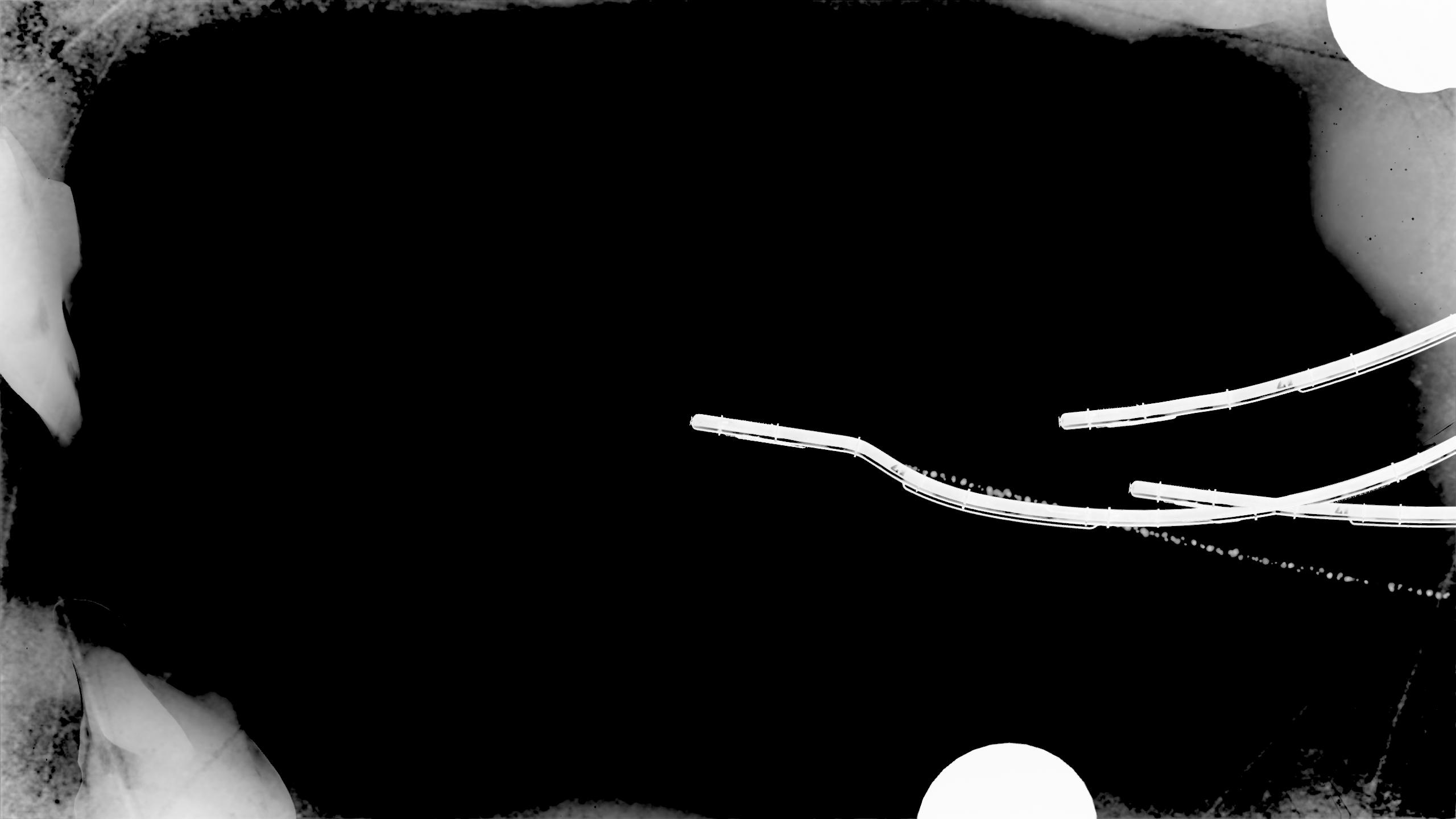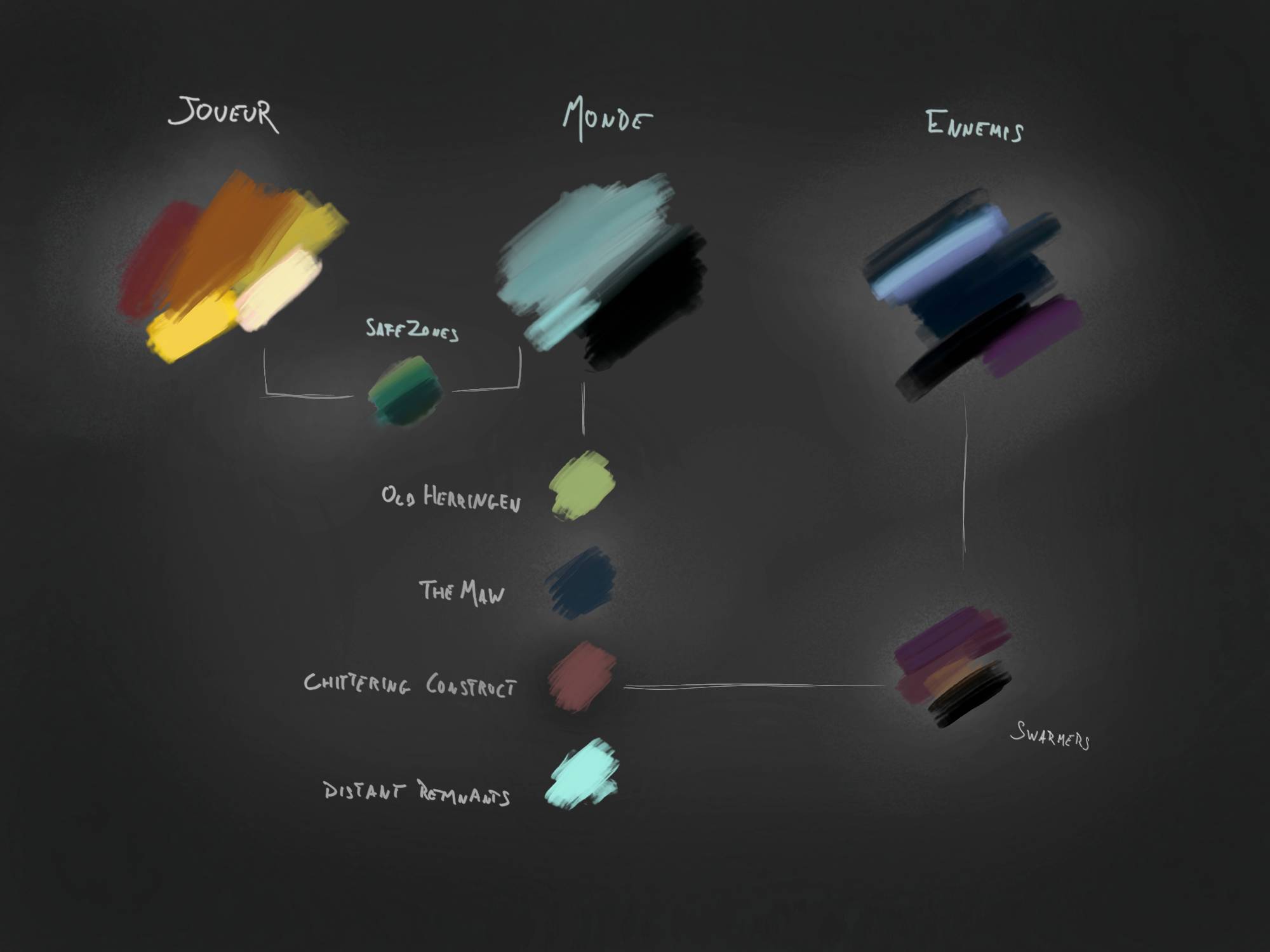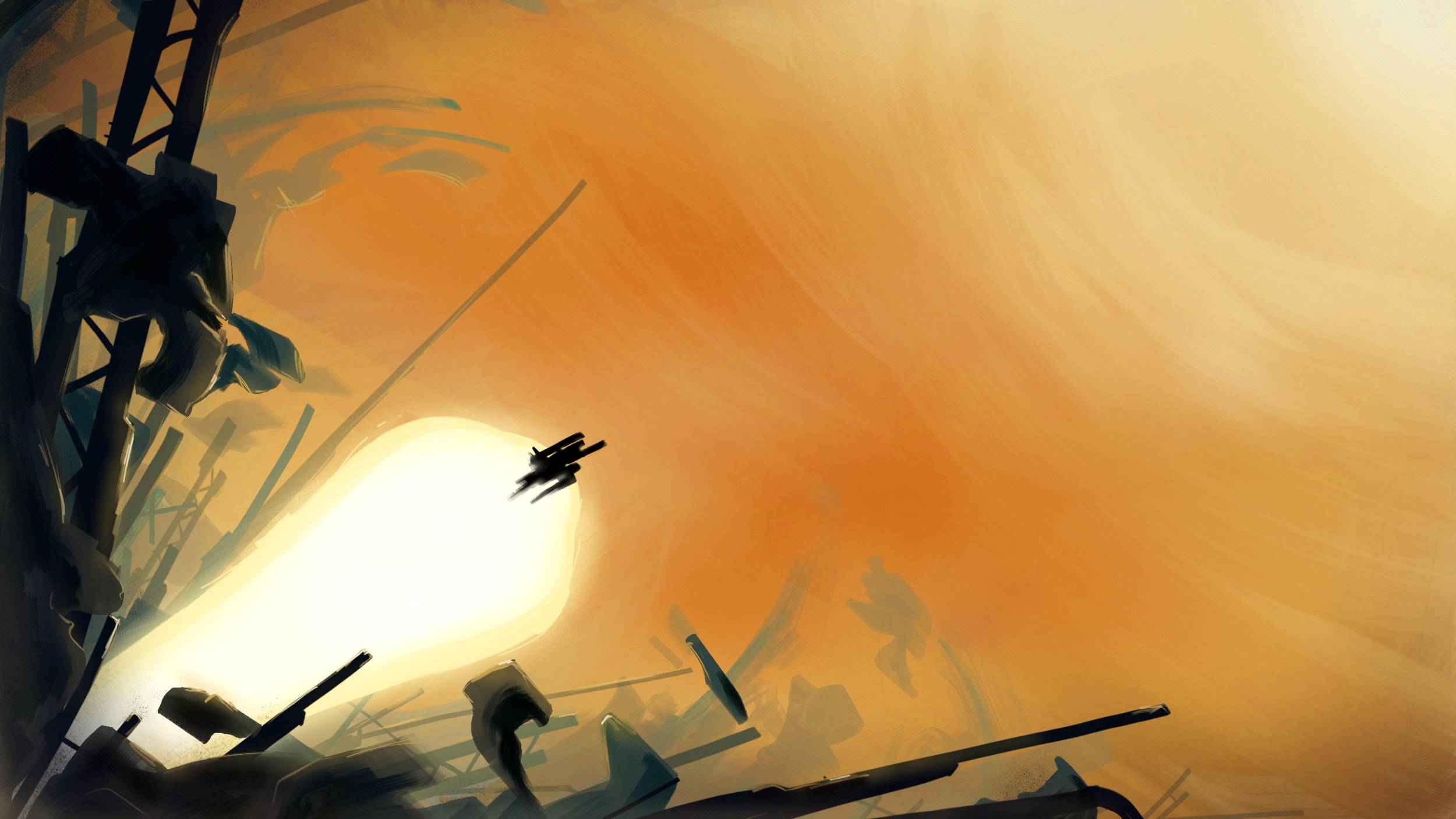
Game Designer, Art Director, Programmer
Cluster 71 is 2D game where the player can explore and perform deliveries among ruins in cold and mysterious cloudy skies.
The player earns a sense of belonging in their ship through the mastery of its intertia-based movement and the customisation of its properties.
Download Cluster 71Gameplay
Cluster 71 has two core gameplays that feed into each other: movement and assembly. They are leveraged by exploration and delivery objectives.
Movement revolves around the control of inertia and the prediction of trajectories. The avatar takes time to accelerate, decelerate and rotate and tends to conserve its current trajectory. The player has to harness and counter this momentum to avoid obstacles and reach their objectives faster. A variety of small mechanics situationally influence thrust, which adds more rythm to movement while also enabling more nuanced movement techniques. Since movement is the part of the game players spend the most time engaging with, we wanted it to leave a lot of room for mastery.
The assembly part of the game allows the player to modify their ship's properties and capabilities by attaching components onto it. These components have specific shapes and are placed on a grid of limited size. Players must identify and make connections between shape patterns in the components they are trying to place and in the empty spaces of the grid to create a compact and optimised shape. However, the components are designed to leave irregularities in the ship, always compelling the player to place something there to make it more even. There are four types of components with different functions, and adding components makes the ship heavier and harder to manœuvre. Players will have to find a balance.
Players can explore the world and perform quests to acquire new components, these components can influence the way their ship moves, and moving allows them to perform better in exploration and quests. Efficient movement is crucial as hostile creatures will try to hunt the player down.



Experience Intentions
With Cluster 71, the aim was to immerse the player in a world that is both hostile and intriguing. To make them feel vulnerable while also making them want to explore it. Additionally, we wanted the ship to be an island of comfort in the middle of this dangerous environment with the player growing attached to it.
I thought it was pertinent to create this attachment through mechanics, giving the player the opportunity to invest time and reflexion in making the ship into their own. And to discover the ins and outs of its physics to go from clumsy movement to efficient and satisfying navigation.
Moreover, I wanted movement to convey the physical sensation of pushing the ship's mass and pulling against its inertia. However, while we achieved that through floaty movement, I didn't want it to feel sluggish or unresponsive but rather elastic and dynamic. Always on the brink of barreling in the wrong direction when navigating between obstacles.
Assembly should be a mix of adaptation and customisation. Making a ship suited for the sort of challenge the player wants to undertake but also having room for self expression, both in terms of shape and functionality. We wanted to allow for emergent situations where players can find new ways to use components to make their ships, like building four-directional movement.
With the world, we wanted to entice and intimidate the player with poetic but intimdating visuals and treacherous creatures.

My Role
My role during this project revolved primarily around the design of the two core gameplays as well as the creation of the game's atmosphere and the production of visual assets and concepts. I also contributed to the programming.
Game Design
I contributed to the creation of the concept of the game and was tasked with the preservation and refinement of this direction. I made the movement gameplay as well as all the camera behaviours. I also designed and rationalised the assembly gameplay. Additionally, I handled the interaction of those two parts of the game, with the way mass affects the movement stats and the in depth balancing of all the components. I also organised playtest sessions throughout the project.
Art Direction & Game Art
I did research and moodboards to establish the intentions, as well as concept art to explore and communicate those ideas to the team. I designed the majority of the visuals for the game. I also contributed to the pre-production, creating tech to make our intentions possible, such as the base for our cloud shader. Finally, I produced most of the VFX, the interface elements, contributed to shaders and post-processing and drew the illustrations for the game (delivery point background, ending, key art).
Programming
I coded most of the features for movement, camera and the HUD. I helped around the project for the integration of various assets, the refinement of existing features, bug fixing, git merges and other support tasks. I also created a tool to accelerate the placement of sprites for environment artists.




















